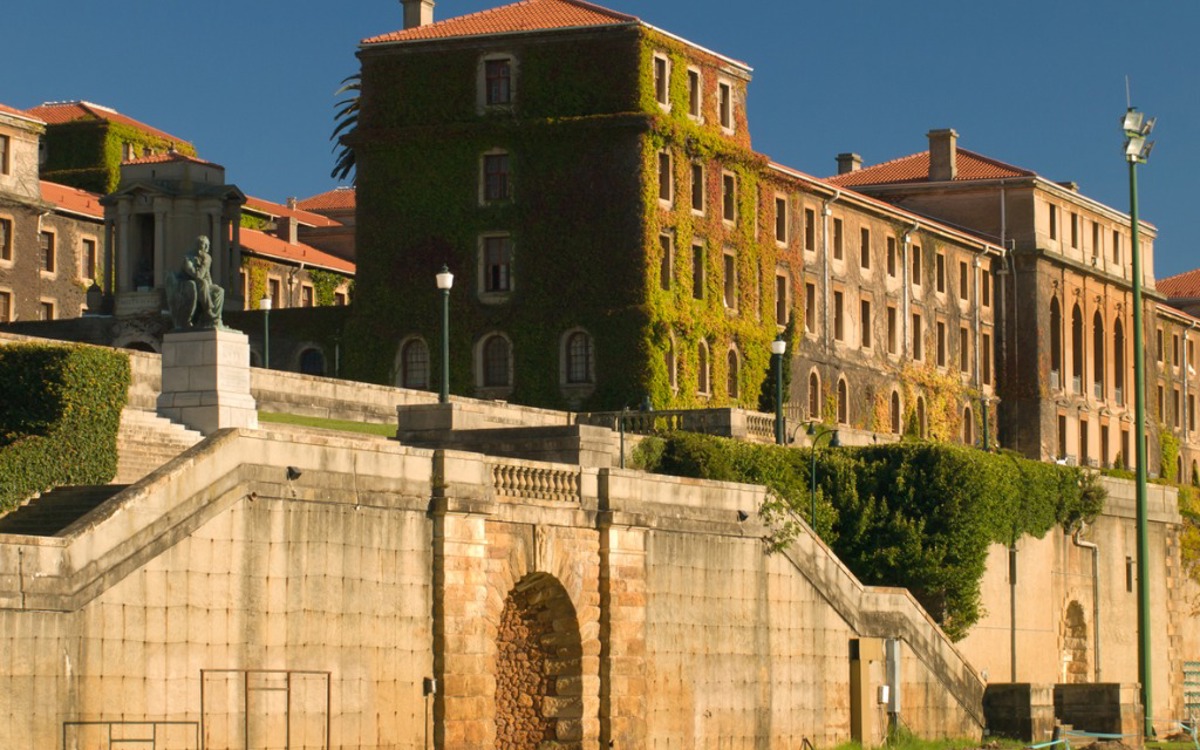
The first series of The Internationalist, a new podcast from the ACU, looks at the critical question of ‘Who gets to learn, and who gets to teach?’. With thanks to Professor Mamokgethi Phakeng, Vice-Chancellor of the University of Cape Town in South Africa, and Dr Vagishwari, Professor in the Department of International Studies, Political Science and History at Christ University in India, for their contributions and ideas in the fifth episode, many of which are outlined below.
2020 has seen an upsurge in calls for symbols of colonialism to be removed, and universities across the world are reflecting on what the physical environment of their campuses – the statues, the building names – mean in today’s world. Recent demonstrations at the University of Oxford in the UK against the statue of Cecil Rhodes are a continuation of the protests that began at the University of Cape Town (UCT) in South Africa, where the statue was removed five years ago.
The names and faces that are displayed on university campuses are some of the most tangible and visible symbols of a society’s identity. They can quickly communicate values to, and elicit a response from, anyone who walks past them – visitor, student, or staff member.
We’re communicating what we value, we’re communicating what we’re proud of, we communicate the kind of the leaders that we want our students to emulate.

At UCT, a hall named after a white colonial politician was recently renamed in honour of Sarah Baartman, a Khoikhoi woman who was enslaved in the 19th century and exhibited as a circus curiosity.
Changing the name of a building or replacing a statue can be a powerful statement that the values of a society have changed. Yet, while a new name is a strong way to show that priorities and thought processes have changed, there are still debates about whether this is the right course or not.
Vagishwari acknowledges that change is needed, or else society would stagnate. However, she believes that it is not as simple as swapping one statue for another or painting over a name on a wall.
We need this kind of activism to create and carve out specific niches for our own identities, for our own existence. My only concern is it has come to one or the other kind of an option. We are unable to straddle both of the worlds and create a discourse on that.

Total change, without preservation of the past, will leave future generations without the knowledge and understanding of the multiple dimensions of their history. Vagishwari’s warning is that the generation which forgets its past is condemned to repeat it.
My major departure is when statues are brought down and on the same pedestal a new statue comes up. So the moment that gets done, a very rich part of our past gets away from the memories of our present and future generations. We are what we are because of what we were. So I would very strongly argue: retain the past but build a parallel narrative to it.

For Mamokgethi Phakeng, history is not static, it is fluid. We shape and make history. She believes that rather than erasing the history of Sarah Baartman Hall, the renaming will become part of its history. People will ask, ‘Why was it changed?’, sparking conversations and debates into the future.
The very act of activism against the symbols we are not proud of is the making of history.

As the nation of South Africa changed following apartheid, symbols were not addressed. This led to many statues falling and symbols being replaced in moments of anger. But Mamokgethi believes that starting discussions before a point of anger is reached enables you to take a more considered approach. For example, when UCT constructed a new Mandela Centre of Memory, a deliberate decision was made to locate it alongside a Cecil Rhodes memorial, which was not on the campus but very close to it. It was a choice that was taken proactively, before anger built, and one which highlights the difference between remembering and rejecting the past.
As places of ideas it is our role as universities to be creative and think of these opportunities. How do you preserve legacies? How do you build on them? How do you create something more powerful out of them rather than stopping at the moment of anger?

The question that remains in all of this is: who gets to decide the names and faces on university campuses?
Academics – philosophers, historians, social scientists – are able to study the past, theorise about the future, and translate those theories into understandable symbols. But for change to be sustainable, Mamokgethi argues that the whole university community needs to be involved – including students, staff, alumni, and members of the community who haven’t studied at the university, but who live on the land that the university is occupying.
Ultimately, this is a question about the role of universities in the process of history – transitioning from the past to the present and into the future. Universities should create an environment – through the curriculum, engagement, and debate – in which students are able to think critically about issues with the full historical context. In this way, remembering the past can become a process of strengthening reconciliation for current and future generations.
Discover more podcast episodes here, or by searching for The Internationalist on your preferred podcast platform.
